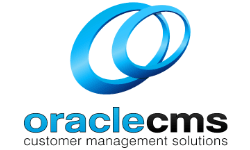How to Handle Overflow Calls – expert tips for any call centre!
Overflow calls are defined as customer calls that cannot be initially handled by the primary call centre workforce.
Call Centres can find themselves with more calls than expected for a variety of reasons, but regardless of the reason, it can be bad news for your customers and your business.
Increased customer frustrations, lost sales opportunities, increased pressure on your employees and so on are all typically consequences of failing to manage the primary workload.
And it happens. A lot.
Results from our Australian Call Centre Rankings reports that conduct mystery shopping calls each month into businesses have shown that over 40% of new sales calls to some industry sectors fail to be answered within 10 minutes!
And for customer service, recent CX Statistics revealed that nearly 60% of customers feel that long holds and wait times are the most frustrating parts of a service experience.
So whether it’s for sales or service, either way, not being able to manage your overflow calls effectively is bad!
The good news is there are a lot of different practices that call centre managers can use to help them manage call volumes and in this article, I explore some of the options in how to handle overflow calls for any call centre.
What causes overflow calls?
There can be a variety of triggers that can result in call centres having overflow calls, including:
- Incorrect forecasting.
- High than expected sick leave.
- Higher than expected call volumes due to unexpected events (system/website issues, technical issues, product or service failures, media coverage, better than expected response to advertising).
- Seasonal variations (i.e. Christmas, Black Friday sales, Easter, school holidays etc).
- Weather variations (i.e. more calls when its cold and wet or when its really hot).
- Internal technical issues (i.e. slow-loading computers, knowledge platforms etc, that is adding time to every single call)
Of course, some of these things can be ‘business as normal’ for many call centres, so overflow calls can often be considered a spike above normal expected levels.
Start with Reducing Call Volumes
While this article is focused on ways to manage overflow calls, one of the best strategies you can employ is to reduce the number of calls coming into your call centre.
That deserves an article all on its own but here are some tips on how you can reduce call volumes into your call centre:
- Enable Customers to self-serve – having improved FAQs on the website, help videos on Youtube or TikTok and so on can all provide your customers with the answers they need, reducing the need to call.
- Use forced messaging – having a recorded message up-front (before they are placed in a queue) can provide customers with the information they need. For example, if a customer was ringing about a power outage, and there was a message that acknowledged the outage and provided an estimated time of recovery, the customer may get all the information they need without having to speak to someone.
- Implement AI solutions – from chatbots, conversational AI, virtual assistants etc, customers may be able to receive they information they need without the need to speak to a live agent.
- Be Proactive – using the power outage example again, an outbound SMS or text message to customers can alert them to an issue and reduce their need to call.
- Agent information – tools that can provide your agents to fast, accurate information such as Knowledge Management Systems can help speed up calls which can improve your capacity to handle more calls.
- Process optimisation – in call centres, Average Handle Time (AHT) has a big bearing on your performance so finding ways to optimise processes, systems etc to reduce AHT can be very beneficial!
- Focus on Failure Demand – reducing the reasons why customers need to contact is a powerful technique that can deliver huge benefits. Learn more about Failure Demand >
- Offer Flexible Shifts – Unplanned leave can have a big impact on your ability to handle call volumes, so an effective way to reduce the number of overflow calls your business receives is by making sure your scheduled employees are at work. Enabling your employees to swap shifts has been an effective tool in reducing unplanned leave!
Best-practice Tips to Manage Overflow Calls
It’s certainly not an easy job managing a contact centre; however, as a global professional, there are thankfully a bunch of best-practice tips we can share on how you can better manage overflow calls or spikes into your call centre.
1. Offer a CallBack or Virtual Queuing
Even the best WFM practices will experience occasions when there simply isn’t enough staff to handle call volumes.
Callback technology now enables you to either call back customers when you have cleared through the rush (automated callback) or it enables the customer to retain their position in the queue (intelligent callback).
2. Use a Recall Alert
It may not be suitable for all workplaces; however, it can be an effective strategy if you need to get the queues cleared quickly.
I’ve seen it work well in an emergency services call centre where once certain thresholds are met, all available staff are required to log in immediately.
3. Have a Secondary Queue
If you’ve got an offline team (e.g. one handling Social Media, Emails, Live Chat etc) you can set up overflow calls thresholds that automatically start routing calls into their groups when triggered. A range of different triggers can be used, including when wait times hit a certain time, when a number of calls waiting hits a certain number, etc.
This does require the offline teams to be logged into a secondary queue; however, it’s one of the simplest ways to keep on top of things.

4. Route the Calls to Voicemail (with a purpose!)
Rather than have customers on hold for endless hours, sometimes you may need to just provide customers with an option to leave a message and you will return the call at the next available opportunity.
Of course, virtual queuing (point 1 would be better and easier to manage) and listening to and managing voicemails can also be hard work.
But ensuring your customers have the option, and recording a voicemail message that is current and can potentially provide valuable information to customers so they don’t need to leave a message, can be a viable solution for some call centres.
5. Use a Specialist Outsourcer
There are a range of call centre outsourcers out there who are specialists in handling overflow calls for businesses based in both Australia and overseas.
They can either offer a full service where they are trained to handle all overflow call types, only certain types of calls (normally the easier/transaction-based calls), or you can have them take reception calls only where they just take a name, number and brief message.
This can be useful not only during overflow situations but also to enable you to conduct training sessions, etc, where you can diver your phones for set periods.
Search specialists outsourcers providing overflow solutions >
6. Reduce the Number of Queue Slots
Queue slots determine the total number of calls you can handle in the queue at any one time.
When the threshold is exceeded and there are no more slots available, customers trying to contact your business will receive an engaged signal.
It’s not ideal, but if the alternative is being forced to wait in a queue for long periods, it might be the lesser of two evils.
7. Get really good at Workforce Planning!
Nothing will substitute for having the correct amount of resources for the expected workload and there is a science, and an entire profession that is dedicated to this skill known as Workforce Optimisation/Workforce Planning (WFO/WFM).
At its core is a very powerful formula called Erlang C that helps you calculate the number of staff you need to meet your defined service levels (E.g. 80% of calls answered in 30 seconds).
Learn more about the Erlang formula >
We also have a number of specialist training courses that teach WFM including:
Summary
Having to manage overflow calls comes with the territory of managing a call centre.
But there are sound techniques and principles that can be applied to help you firstly reduce the call demand both with and without technology and that won’t cost you a lot of money (if any at all!).
And failing that, you still have a number of tools and options at your disposal that can help improve the outcomes for your business and your customers.
If you’ve got any other suggestions, either comment below or send them in to us and we’ll add them to the article and give you a shout out!


















